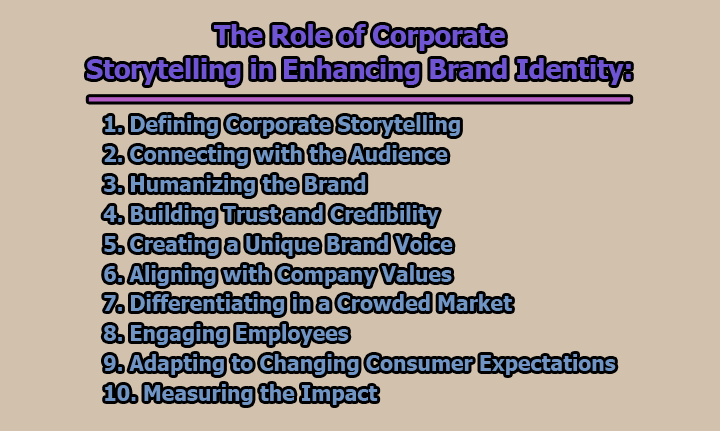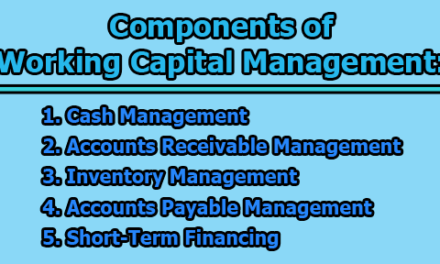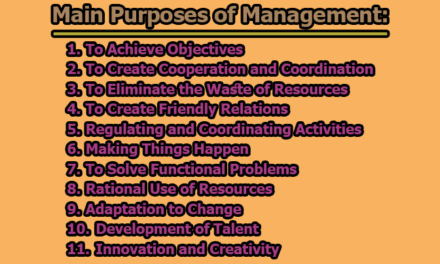The Role of Corporate Storytelling in Enhancing Brand Identity:
In the dynamic landscape of today’s business world, where competition is fierce and consumer loyalty is a coveted prize, crafting a compelling brand identity has become more crucial than ever. One of the potent tools that businesses employ to establish and strengthen their brand identity is corporate storytelling. In the rest of this article, we will explore the role of corporate storytelling in enhancing brand identity.
1. Defining Corporate Storytelling: Corporate storytelling is a strategic communication approach that involves the art of crafting and narrating compelling stories to convey the essence of a company’s brand. It goes beyond conventional marketing techniques, seeking to establish an emotional connection with the audience. At its core, corporate storytelling is about weaving narratives that encapsulate the company’s values, culture, history, and mission. These stories become a powerful tool in shaping how the brand is perceived, influencing the opinions and attitudes of consumers.
The essence of defining corporate storytelling lies in understanding that it is not merely a chronological account of events; rather, it is a purposeful and intentional communication strategy. It involves selecting and presenting stories that align with the brand’s identity and resonate with the target audience. This process requires a thoughtful consideration of the values and messages the company wants to convey, ensuring that the narrative reinforces the overall brand image.
2. Connecting with the Audience: At the heart of corporate storytelling is the profound ability to forge a genuine and emotional connection with the audience. In an era where consumers are bombarded with information, creating a meaningful engagement becomes imperative. Corporate storytelling achieves this by tapping into the human experience, allowing consumers to relate to the brand on a personal level.
By sharing stories that evoke emotions and resonate with the values and aspirations of the target demographic, a brand can transcend the transactional nature of business. These stories serve as a bridge, connecting the brand with the emotions, experiences, and desires of the audience. This emotional connection fosters a sense of loyalty, making consumers more likely to choose and advocate for a brand that they feel a deeper connection with.
3. Humanizing the Brand: One of the significant challenges corporations face is overcoming the perception of being impersonal and detached entities. Corporate storytelling addresses this challenge by humanizing the brand. Instead of being seen as faceless entities driven solely by profit motives, companies can use storytelling to showcase the human side of their operations.
This humanization process involves sharing stories about the people behind the brand – the founders, employees, and customers. By putting a human face on the brand, corporations become more relatable and approachable. Consumers are more likely to engage with a brand that they perceive as having a genuine and authentic human touch. Through carefully curated narratives, a brand can communicate its values, ethics, and the collective personality of the individuals contributing to its success. Humanizing the brand through storytelling establishes a connection that goes beyond products or services, creating a lasting and meaningful impression in the minds of the audience.
4. Building Trust and Credibility: Trust is the bedrock of any successful brand, and corporate storytelling serves as a powerful tool for building and reinforcing this trust. In a landscape where consumers are increasingly skeptical and discerning, authenticity is paramount. Corporate storytelling enables companies to be transparent about their journey, successes, and even failures. By openly sharing these experiences, a brand demonstrates vulnerability and authenticity, which resonates with consumers.
Through narratives that highlight the company’s commitment to quality, ethical practices, and customer satisfaction, businesses can instill confidence in their audience. Trust is not a given; it must be earned, and corporate storytelling provides a platform to showcase the genuine intentions and integrity that underpin the brand. When consumers perceive a brand as trustworthy and transparent, they are more likely to choose that brand over competitors, leading to increased loyalty and positive word-of-mouth.
5. Creating a Unique Brand Voice: In a crowded marketplace, establishing a distinctive brand voice is essential for standing out and capturing the attention of consumers. Corporate storytelling plays a pivotal role in shaping and defining this unique brand voice. Through carefully crafted narratives, a brand can communicate its personality, values, and tone in a way that sets it apart from competitors.
The key lies in consistency – the stories told by a brand should align seamlessly with its identity, creating a cohesive and recognizable narrative. This distinctive brand voice becomes a guiding force for all communication efforts, from marketing campaigns to social media interactions. Consumers are drawn to authenticity and originality, and a unique brand voice cultivated through storytelling becomes a powerful asset in attracting and retaining a loyal customer base.
6. Aligning with Company Values: Companies are not just entities that provide products or services; they are often driven by a set of core values that define their purpose and mission. Corporate storytelling becomes a conduit for communicating and reinforcing these values to both internal and external audiences.
By sharing stories that exemplify the company’s commitment to social responsibility, environmental sustainability, or ethical business practices, a brand can create a narrative that aligns with the values of its target audience. This alignment fosters a sense of shared values between the brand and its customers, building a deeper connection. Moreover, in a socially conscious era, consumers increasingly seek out brands that mirror their own values, and corporate storytelling serves as a powerful means to convey this alignment authentically.
7. Differentiating in a Crowded Market: In today’s competitive business landscape, differentiation is the key to capturing and retaining consumer attention. Corporate storytelling provides a unique opportunity for brands to carve out a distinctive identity and set themselves apart from competitors. By narrating stories that showcase the brand’s unique selling propositions (USPs), companies can create a memorable and compelling narrative that resonates with their target audience.
Effective differentiation through storytelling involves identifying what makes the brand special, whether it’s a commitment to innovation, exceptional customer service, or a compelling origin story. These unique elements can be woven into narratives that highlight the brand’s strengths and advantages. As a result, consumers are more likely to remember and choose a brand that stands out in the sea of options, fostering brand loyalty and preference.
8. Engaging Employees: Corporate storytelling isn’t limited to external audiences; it also plays a crucial role in engaging and motivating employees. Employees are not just workers; they are ambassadors of the brand, and their commitment and enthusiasm contribute significantly to the overall success of the company.
By sharing stories that showcase the company’s culture, values, and achievements, corporate storytelling helps employees connect with the organization on a deeper level. This connection fosters a sense of pride and belonging, making employees more invested in the success of the brand. Engaged employees are more likely to be productive, innovative, and committed, creating a positive cycle that benefits both the company and its workforce.
9. Adapting to Changing Consumer Expectations: Consumer expectations are dynamic and subject to change based on societal trends, cultural shifts, and emerging values. Corporate storytelling allows brands to adapt to these changing expectations by evolving their narratives in response to societal shifts. This adaptability is crucial for staying relevant and resonating with a diverse and evolving audience.
Through ongoing storytelling, companies can demonstrate their awareness of societal changes and their commitment to addressing emerging concerns. Whether it’s embracing sustainability, diversity and inclusion, or social responsibility, brands can use storytelling to showcase their efforts and progress in aligning with evolving consumer expectations. This adaptability not only enhances brand perception but also ensures that the brand remains in sync with the values and preferences of its target audience.
10. Measuring the Impact: The effectiveness of corporate storytelling lies not just in the art of crafting compelling narratives but also in the ability to measure and assess the impact of these stories. Here are key areas to consider when evaluating the success of corporate storytelling efforts:
- Brand Awareness: Brand awareness is a fundamental metric that indicates how familiar and recognizable a brand is within its target market. Before and after implementing storytelling strategies, companies can measure brand awareness through surveys, online presence analysis, and social media metrics. An increase in brand recall and recognition suggests that the storytelling initiatives have successfully elevated the brand’s visibility.
- Customer Loyalty: Loyal customers are the lifeblood of any successful business. Monitoring customer retention rates, repeat business, and customer lifetime value can provide valuable insights into the impact of storytelling on customer loyalty. A positive correlation between storytelling efforts and increased customer loyalty indicates that the narratives are resonating with the audience and fostering a stronger bond.
- Market Share: Examining changes in market share is a tangible way to assess the competitive impact of corporate storytelling. A growing market share may signify that the brand’s stories are influencing consumer choices and attracting new customers. Conversely, a decline in market share may prompt a reassessment of storytelling strategies to better align with market demands.
- Social Media Engagement: In the digital age, social media serves as a powerful platform for brand communication and engagement. Monitoring metrics such as likes, shares, comments, and follower growth can offer insights into the effectiveness of storytelling content. High engagement rates indicate that the stories are capturing the audience’s attention and encouraging them to actively participate in the brand narrative.
- Customer Feedback: Direct feedback from customers provides qualitative insights into how well corporate storytelling resonates with the target audience. Surveys, reviews, and comments offer a glimpse into the emotional impact of the stories and whether they align with customer expectations. Positive feedback suggests that the brand’s narratives are striking a chord with the audience, while constructive criticism can guide refinements in storytelling approaches.
- Return on Investment (ROI): Ultimately, businesses need to assess the financial impact of their storytelling efforts. Calculating the return on investment involves analyzing the costs associated with storytelling initiatives against the tangible benefits, such as increased sales, customer acquisition, or enhanced brand equity. A positive ROI indicates that storytelling is not just a creative endeavor but a strategic investment that contributes to the overall success of the business.
- Continuous Improvement: Measuring the impact of corporate storytelling is not a one-time endeavor but a continuous process of evaluation and refinement. Regularly reviewing key performance indicators allows businesses to adapt their storytelling strategies to changing market dynamics, emerging trends, and evolving consumer preferences. This commitment to continuous improvement ensures that the brand remains agile, relevant, and resonant in the ever-shifting landscape of brand communication.
In conclusion, the role of corporate storytelling in enhancing brand identity cannot be overstated. It serves as a powerful tool that goes beyond marketing rhetoric, creating a narrative tapestry that connects with the audience on a personal and emotional level. From building trust and credibility to fostering employee engagement, the impact of effective corporate storytelling ripples across various facets of a business, ultimately shaping a robust and distinctive brand identity in the minds of consumers. As companies navigate the ever-evolving business landscape, embracing the art of storytelling is not just an option; it is a strategic imperative for those aiming to stand out and thrive in the competitive market.
Frequently Asked Questions (FAQs):
What is corporate storytelling, and how does it differ from traditional marketing?
Corporate storytelling is a strategic communication approach where companies use narratives to convey their values, culture, history, and mission. Unlike traditional marketing, which often focuses on product features and promotional messages, corporate storytelling aims to create an emotional connection with the audience by sharing authentic and compelling stories about the brand.
How does corporate storytelling contribute to building trust and credibility?
Corporate storytelling builds trust by offering transparency and showcasing a company’s journey, challenges, and successes. Through authentic storytelling, a brand communicates its values and principles, establishing credibility. Consumers are more likely to trust a brand that is open about its story, fostering a positive perception and long-term loyalty.
Can corporate storytelling be applied to engage employees?
Absolutely. Corporate storytelling is a powerful tool for engaging employees by sharing stories that reflect the company’s culture, values, and achievements. These narratives inspire and motivate employees, fostering a sense of pride and commitment. Engaged employees are more likely to contribute positively to the success of the brand.
How does corporate storytelling help in differentiating a brand in a crowded market?
In a competitive market, corporate storytelling allows a brand to highlight its unique selling propositions (USPs). By crafting narratives that showcase what sets the brand apart, storytelling creates a memorable and distinctive identity. This differentiation is crucial for capturing consumer attention and building brand loyalty.
Is corporate storytelling adaptable to changing consumer expectations?
Yes, corporate storytelling is adaptable to changing consumer expectations. Brands can evolve their narratives to align with societal changes, emerging trends, and shifting values. This adaptability demonstrates a brand’s responsiveness and helps it stay relevant, resonating with consumers’ evolving expectations.
How can companies measure the impact of corporate storytelling?
Measuring the impact of corporate storytelling involves tracking various metrics, including brand awareness, customer loyalty, market share, social media engagement, and customer feedback. Additionally, assessing return on investment (ROI) provides insights into the financial success of storytelling efforts. Continuous monitoring and adjustment based on these metrics ensure storytelling strategies remain effective.
Can corporate storytelling be a tool for creating a unique brand voice?
Yes, corporate storytelling plays a crucial role in creating a unique brand voice. Through carefully crafted narratives, a brand can communicate its personality, values, and tone in a way that distinguishes it from competitors. Consistency in storytelling reinforces this distinctive voice, making the brand more memorable and recognizable.
How does corporate storytelling align with a company’s core values?
Corporate storytelling aligns with a company’s core values by providing a platform to communicate and reinforce these values. By sharing stories that exemplify the company’s commitment to principles such as social responsibility, ethical business practices, or environmental sustainability, storytelling helps create a narrative that resonates with the target audience.
Can corporate storytelling be used to adapt to cultural shifts and societal changes?
Absolutely. Corporate storytelling allows brands to adapt their narratives to align with cultural shifts and societal changes. By addressing emerging concerns and showcasing efforts to support positive changes, companies can use storytelling to demonstrate their awareness and commitment to evolving consumer expectations.
Is corporate storytelling a continuous process, or is it a one-time effort?
Corporate storytelling is a continuous process. The landscape of business, consumer expectations, and societal trends is dynamic. Therefore, storytelling efforts must be regularly reviewed and adjusted to ensure they remain relevant and effective. Continuous improvement is essential to adapt to changing circumstances and maintain a strong brand identity over time.

Library Lecturer at Nurul Amin Degree College










